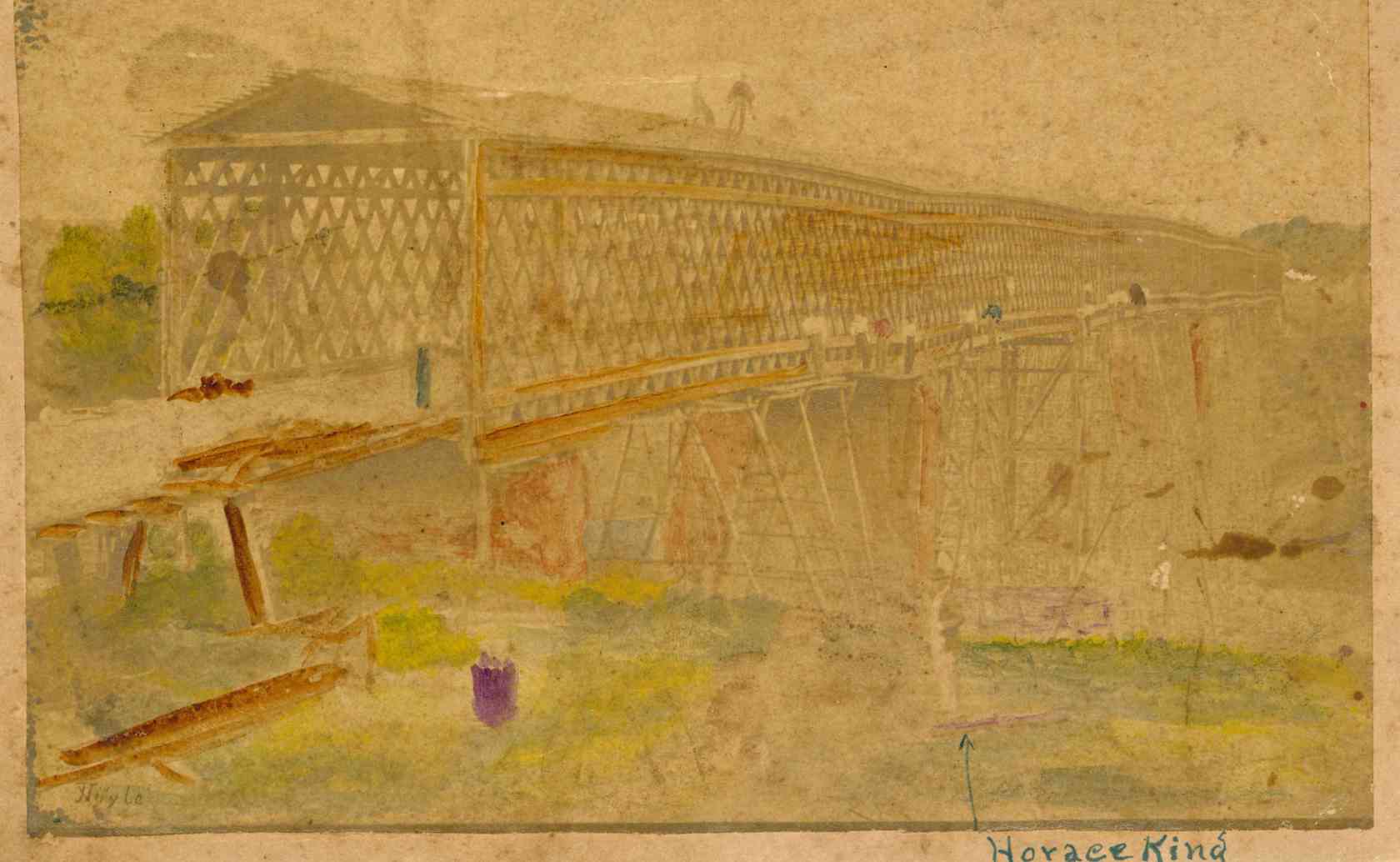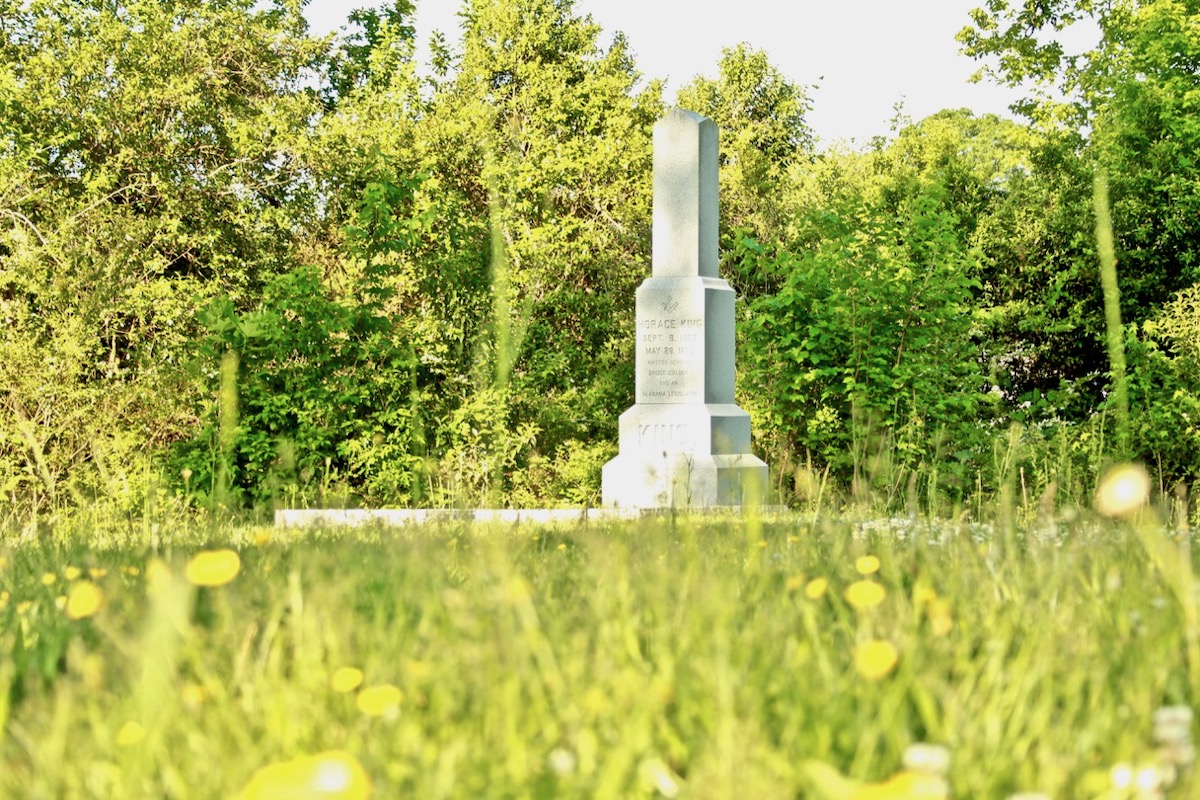Horace King was born in 1807 in South Carolina. Unlike most enslaved persons, he was taught to read and write at a young age. By adulthood, he’d become a competent builder. It’s unclear how he learned the lattice truss design he used for building bridges, but it may have occurred when the lattice truss Pee Dee River Bridge was built near his home.
Around 1830, King was purchased by contractor John Godwin. Godwin took King with him to build a bridge over the Chattahoochee River and the pair began building throughout the South.
In the mid-1830s, Godwin sent King to Oberlin College in Ohio, the first college to admit African Americans. Following his education, King returned to work with Godwin, building courthouses and bridges throughout Georgia and Alabama. In 1841, they rebuilt the Columbus City Bridge which had been destroyed in a flood.

Godwin experienced financial difficulty in the late 1830s and transferred ownership of King to his wife and her uncle, possibly to protect King from being taken by creditors. King was permitted to marry a free woman, Frances Gould Thomas, a rare allowance in the South.
By the 1840s, King and Godwin were considered “co-builders”—another rarity for an African American man. Around this time, King’s skill and reputation surpassed Godwin’s and he began working independently, supervising major bridge construction. King befriended Robert Jemison, Jr., an attorney and entrepreneur in Alabama, who used King to build several of his projects.
Unlike most enslaved persons, King was permitted to keep some of his earnings, which he used to buy his freedom in 1846. Under Alabama law, he was only allowed to remain in the state for one year after purchasing freedom. His friend Jemison used his seat in the Alabama State Senate to arrange legislation allowing King to remain in Alabama as a free man.
In 1852, King purchased land near John Godwin. When Godwin died in 1859, King had a monument built over his grave.
King later partnered with other men to construct Moore’s Bridge over the Chattahoochee (near Whitesburg, GA) and gained interest in the bridge. He moved his family near the bridge in 1858 and they collected bridge tolls and farmed their land while King continued building bridges throughout the Southeast.

When the Civil War began, King was conscripted by the Confederate army to build obstructions and defenses in the Apalachicola River and Alabama River. In 1863, he was moved back to Columbus to build a mill that manufactured cladding for Confederate warships.
Many of his bridges were destroyed during the Civil War, including Moore’s Bridge, which King owned, and the Columbus City Bridge. Postwar rebuilding efforts created plenty of work for King, who rebuilt the Columbus City Bridge for the third time in his life. He built factories, buildings and several bridges over the Chattahoochee.
In 1867, King became a registrar for voters in Russell County, Alabama. In 1868 he was elected to the Alabama House of Representatives and was reelected in 1870. He did not seek reelection for a third term.
Instead, King moved his family to LaGrange, Georgia. He trained his children in construction as he continued building. By the mid-1870s, he was passing projects onto his children, who formed King Brothers Bridge Company.

King’s health began to fail in the 1880s and he died on May 28, 1885. His death was reported in all major Georgia newspapers, a rarity for an African American. He was posthumously inducted into the Alabama Engineers Hall of Fame at the University of Alabama.
To see Horace King’s work, you need only to visit LaGrange’s downtown square. He built nearly the entire east side of the square and parts of the north side. Many of the original buildings designed and built by King were lost to time, but his influence is evident throughout LaGrange and the South. When King died, his funeral processed around the square and business came to a stop as residents of every background came to pay their respects. King is buried at Mulberry Street Cemetery in LaGrange.